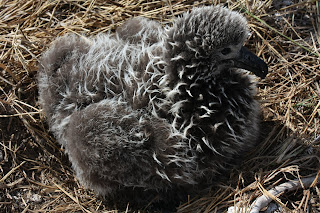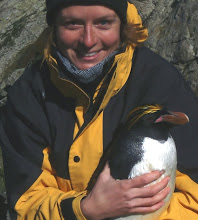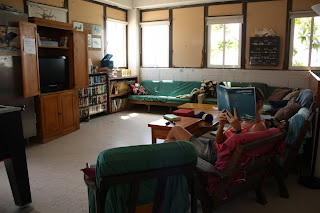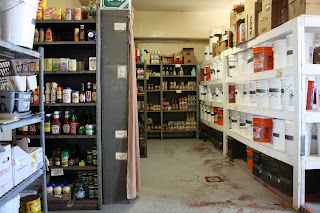
Another albatross enters the world.

These parents were very excited about their brand new chick.

A Laysan albatross chick.

A black-footed albatross chick.

Squished but cosy.

This black-foot chick was almost completely white.
Being a girl, cute baby animals tend to reduce me to a gibbering simpleton who will happily stand and watch an albatross chick scratching itself and pooing for hours on end. This means I now spend a large proportion of the day pointing at chicks and dribbling nonsense like "Ook at de ickle wickle fluffy chicky!". Hard-nosed biologist lady I ain't. Fluffy chicks that can't run away also tend to make me a little trigger happy, and I now have somewhere approaching 1049 photos of albatross chicks. It was pretty difficult to whittle them down to these few, but hopefully they give you some idea of what I'm up against. On your marks, get set, awwwwwww.





The chicks very quickly become enormously fat, thanks to their diet of fish and squid. Adult birds will partially digest whatever they catch and convert it into an energy rich oil which they feed to the chicks. The oil provides an efficient way of transporting food over large distances, since adults routinely fly thousands of miles on fishing trips.

Another tasty meal of regurgitated semi-digested squid oil.

Adults will guard the chick for the first couple of weeks.

Sometimes the whole family hang out together.

"Muuuuuum!"
One of my jobs on the island is to monitor albatross reproductive success within four designated plots. This involves checking each nest within the plots every 4-5 days and keeping track of who is there and what is going on. During incubation the band number of the incubating adult is recorded, and after the chick has hatched I keep a record of chick survival rates. From quite an early age the chicks will leave their nest cup and wander around, and since one albatross chick is pretty much indistiguishable from another, in order to keep track of them each chick is banded with a temporary plastic poultry band. Banding the chicks is somewhat easier than banding the adults, since they are much smaller and wobblier, often displaying hilariously poor coordination. They do snap at you though, and sometimes in doing so cause a little bit of squid oil to dribble out their beak. Not the full on projectile vomit (though this does occassionally happen), but almost as if they are so full of oil that some of it just sloshes out if they move too quickly.

Banding a chick.

Each plot chick gets a unique number.

Another squid oil delivery.

Childhood obesity is a growing problem in the albatross community.
When the chicks reach their maximum weight they are much heavier than the adults, and the excess bulk is used to fuel the production of their flight feathers. At this stage the chicks still cannot walk upright, being too fat for their legs to support them, and instead shuffle around on their hocks looking like little arthritic old people. As they get older they start to 'practice' flying- extending their stumpy wings and flapping them until they stand up, then plopping back down onto their bellies after a few seconds.

Staring into space.

Projectile poo.

Albatross chicks on East Island.

The bowling pin look is popular this season.
The older chicks are very curious and will shuffle around looking for stuff to play with- feathers, twigs, pebbles, the carcasses of dead birds, whatever they can find. If you sit quietly by them they will sometimes come and investigate you, and will happily spend several minutes nibbling at a proffered hand or flipflop. Being nibbled by an albatross chick is one of life's greatest pleasures- I thoroughly recommend it.

Caitie and friend.

Playing with a feather.

Playing with the author's hand.

Wardrobe malfunction.

I'm the king of the world!

The awkward teenage phase.






















